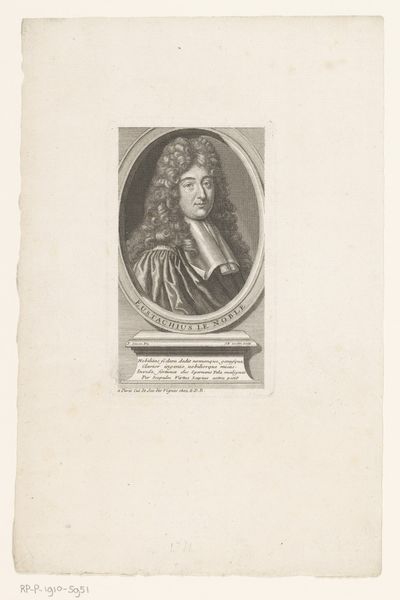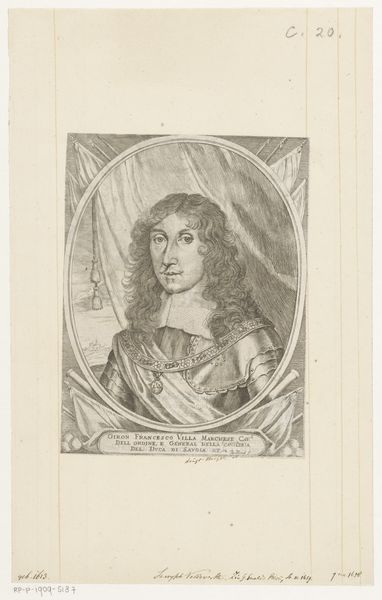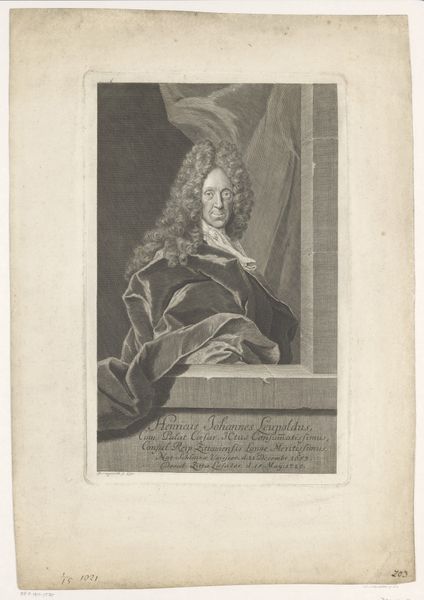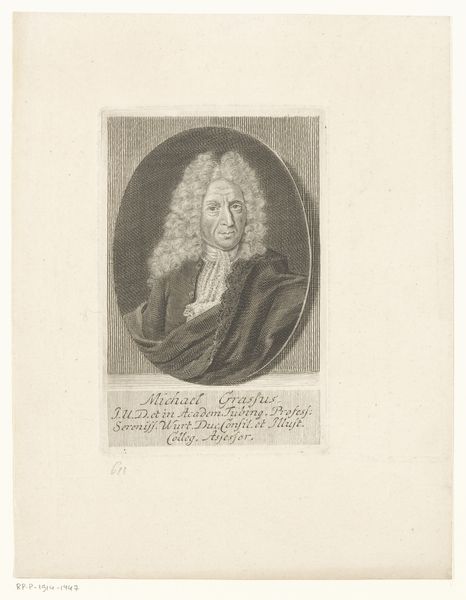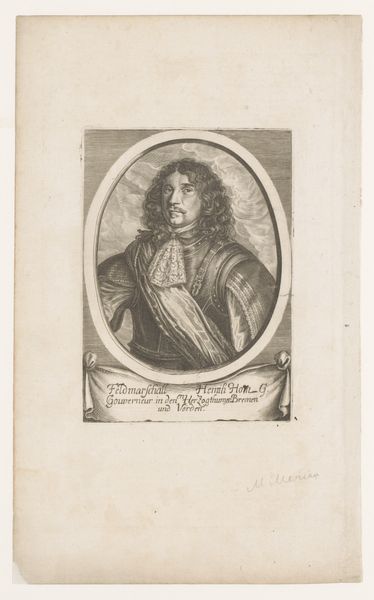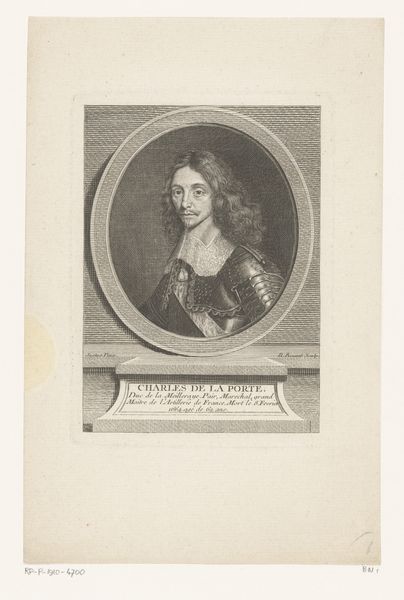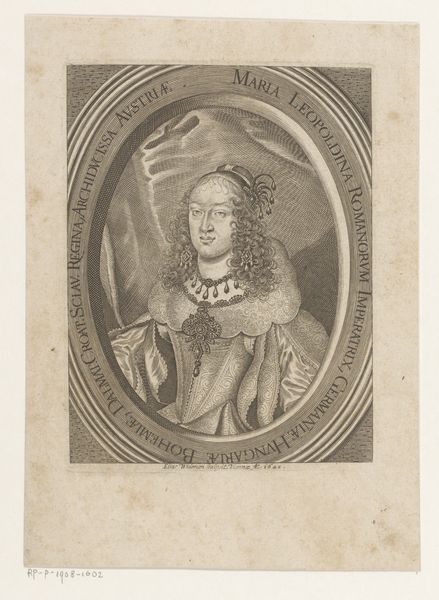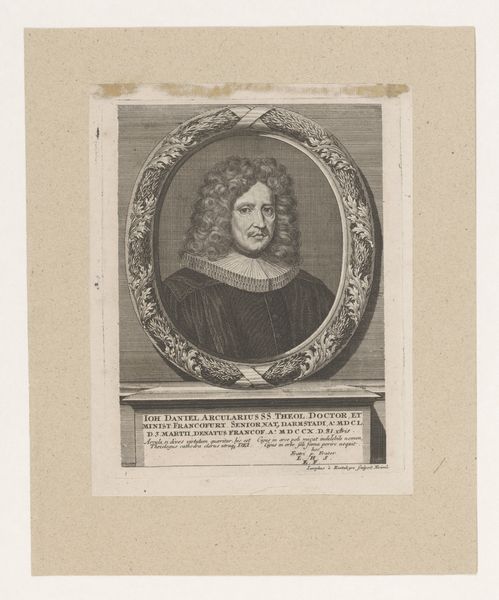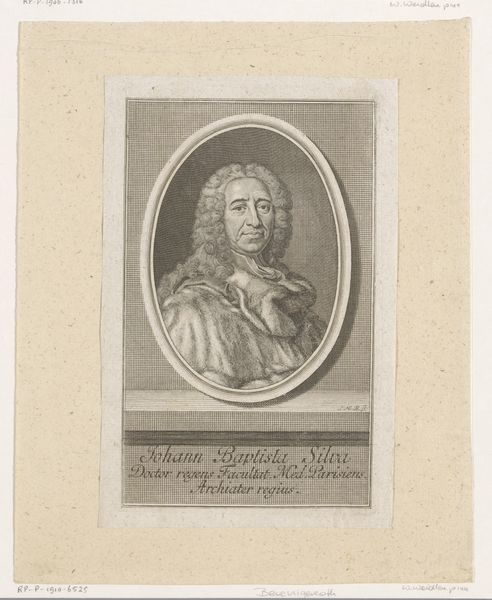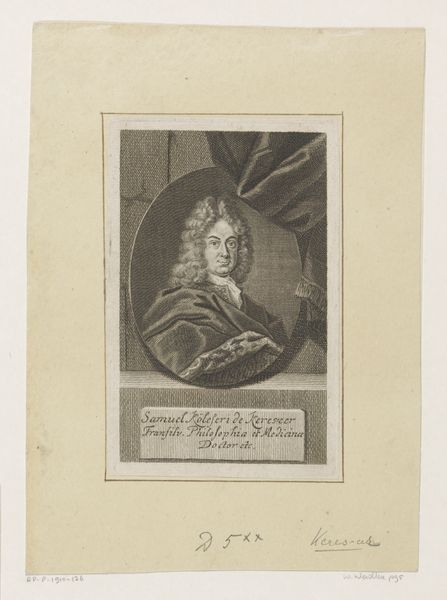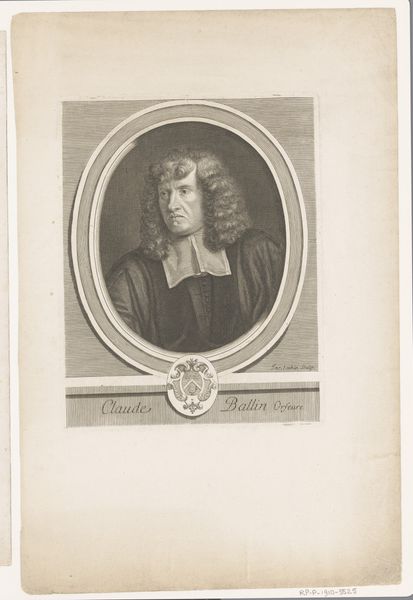
print, intaglio, engraving
#
baroque
# print
#
intaglio
#
history-painting
#
engraving
Dimensions: height 184 mm, width 137 mm
Copyright: Rijks Museum: Open Domain
Editor: Here we have a print from 1663, "Portret van René Bary" by Jean Frosne, executed in intaglio, an engraving on paper. What strikes me is how the stark lines create texture, mimicking the rich fabrics and flowing hair of the subject. What catches your eye about this piece? Curator: From a materialist perspective, I find myself considering the labour involved in the production of this engraving. Intaglio is a process demanding skill and time. The choice to represent Bary in this way suggests a desire to not only capture his likeness but also to showcase the engraver's technical prowess, reflecting social values around craftsmanship and patronage in 17th century Europe. Editor: That’s a great point. It’s easy to overlook the maker's hand when we focus on the subject of a portrait. Does the use of a print medium itself contribute to its meaning? Curator: Absolutely. Prints, unlike unique paintings, allowed for wider distribution and access. The reproduction and consumption of this image become key. Was this image intended for a select audience, solidifying Bary's status within a specific social stratum? Or was it aimed at broader circulation, promoting certain ideals of leadership or intellect embodied by Bary? Editor: So, by looking at the materials and the method, we can really start to uncover how this artwork functioned within its society. Curator: Precisely. Considering the "how" of its creation is just as important as the "who" and "what." It sheds light on the economic and social forces at play during the artwork’s making. Editor: I see what you mean, understanding the material context has really changed my appreciation for this print! Thanks!
Comments
No comments
Be the first to comment and join the conversation on the ultimate creative platform.

